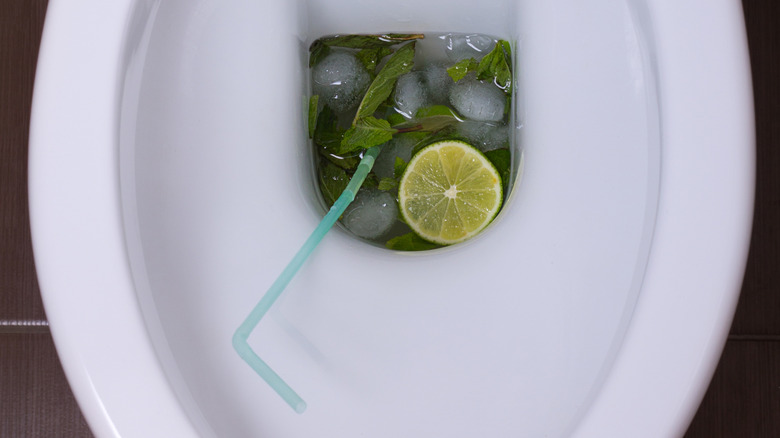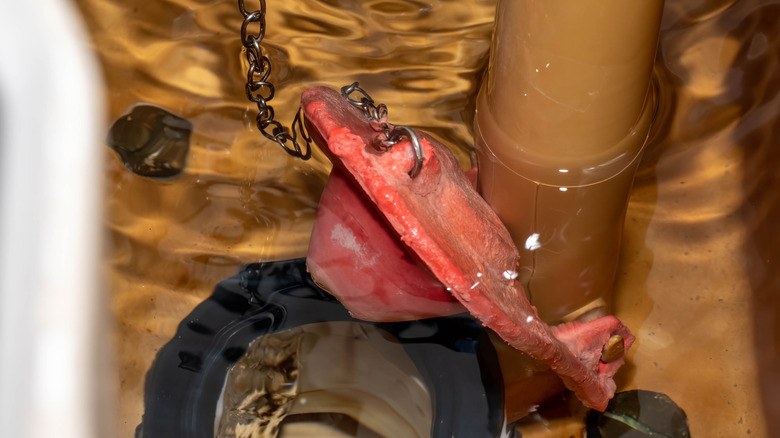The Quick Fix Your Running Toilet Needs Is Already Sitting In Your Kitchen
When we tell you a running toilet can be fixed with something sitting in your kitchen, the only way to live up to that potential is for the story to somehow involve a drinking straw.
How, you might be asking, did we know that Uncle Leon was in the kitchen? And what's he going to do with that straw? Unfortunately, it gets less exciting from here. This particular bit of plumbing wizardry has nothing to do with Uncle Leon and precious little to do with plumbing. It's simply a bit of mundane citizen engineering that addresses a product flaw manufacturers have failed to correct: an over-long toilet flapper chain. The answer is (yes, really) a short length of drinking straw.
Before we get to the question answered by the straw, it'll be useful to understand what on earth we're talking about. A toilet flapper is a soft, usually red valve component that allows water to enter the toilet's bowl from the tank. It also, of course, should prevent water from entering the tank when it shouldn't, but flappers — like the rest of us — don't always remain as limber as they once were. A flapper that's warped or has lost its flexibility can allow water to leak from the tank to the bowl when it shouldn't. This is a running toilet, but a worn flapper isn't the only cause of that problem. Sometimes it has to do with the flapper's chain finding itself in places where it has no business being, so check the chain before replacing the toilet flapper.
A problematic flapper chain's greatest hits
A problematic flapper chain might sound like a goofy indie band or an inscrutable quantum physics hypothesis, but it's actually a simple mechanism that causes many toilet running issues. The chain connects the toilet's flush lever to the flapper, and should be your starting point when troubleshooting toilet flapper issues. The length of the chain affects how well the flapper seals. With a full tank, the chain should have a little slack. Without the slack, the toilet will run constantly. With too much slack, the chain can get caught under the flapper and prevent a good seal, which also results in a running toilet.
You might be familiar with the handle jiggle, a quick but temporary way to pull a chain out from under the flapper (or remove kinks that shorten the chain too much). A better approach is to change the chain's length: Move the clip to a chain link closer to the flapper to shorten the chain. Now, yes, we can finally get to the drinking straw part.
One way to cut out the confusion over chain length is to cut the aforementioned drinking straw (a plastic one that won't dissolve when submerged in water for a while) in half and slip it over the chain. Seriously, it's that easy. This effectively prevents the chain from bending near the flapper so that it can't get sucked between the flapper and the valve seat, which prevents a watertight seal. Toilets without chains can still have problems that need to be fixed, but obviously, ones that do have this issue with chain length. And if you have a chain model and are experiencing this issue, well, now you know how easily you can rectify it.

